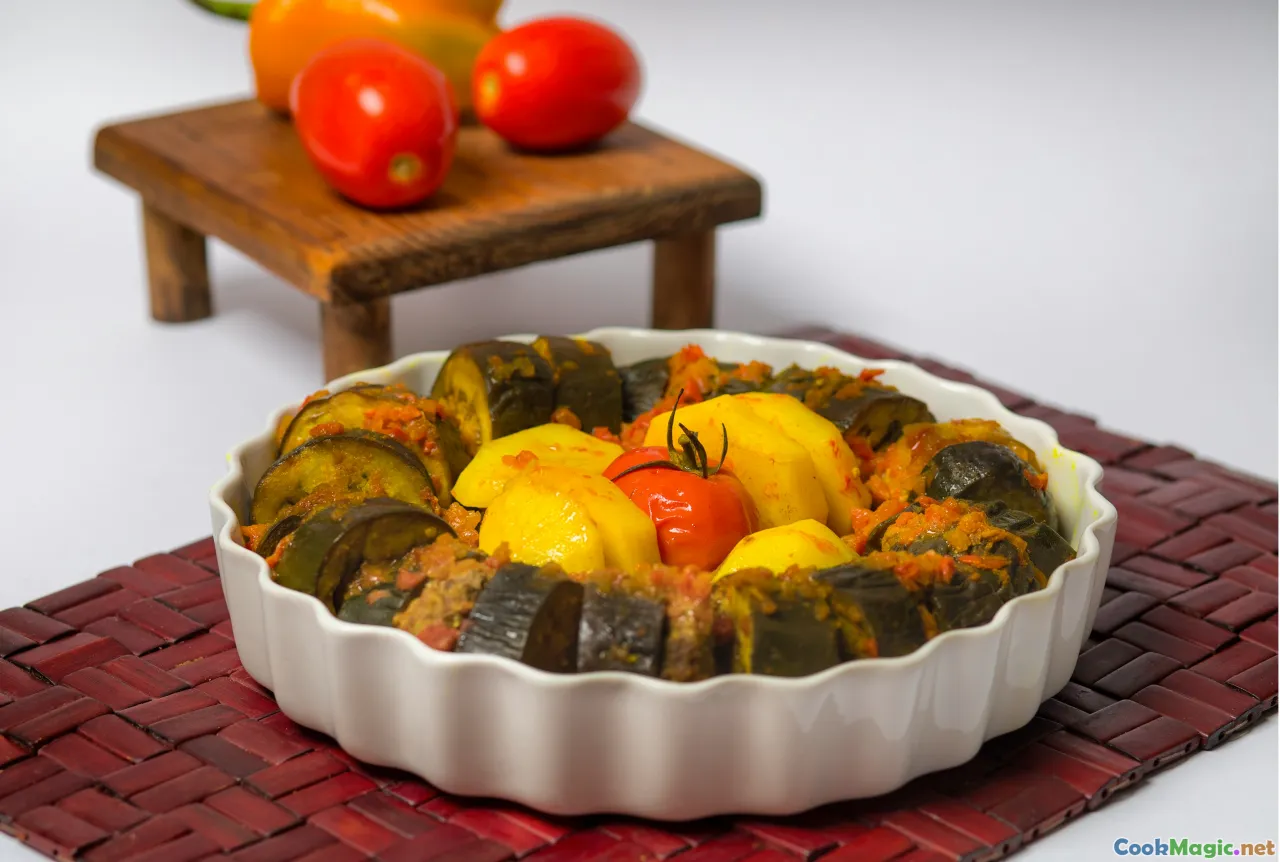Balancing Freshness Using Armenian Pickled Vegetables
10 min read Explore how Armenian pickled vegetables add vibrant flavor and preserve freshness in authentic dishes across Armenian cuisine. August 23, 2025 15:05
Balancing Freshness Using Armenian Pickled Vegetables
In the colorful tapestry of Armenian cuisine, there’s a timeless art of harmonizing flavors—where the vibrant crunch of fresh vegetables meets the pungent, piquant tang of pickles. Armenian pickled vegetables are not mere condiments; they are cultural symbols that embody resilience, hospitality, and a deep appreciation for preserving seasonal bounty. As I delve into the world of Armenian pickles, I invite you to journey through trad itions, flavors, and culinary secrets that elevate vegetable balancing to ceremonial artistry.
The Cultural Significance of Pickled Vegetables in Armenia

Armenia's land, rich with mountains, fertile valleys, and a climate that swings between hot summers and cold winters, naturally lends itself to food preservation. Historically, families would painstakingly prepare jars of pickled vegetables during harvest, ensuring sustenance through the harsh winter months. These pickles are more than just preserved vegetables; they are woven into Armenia's social fabric, shared during traditional feasts, wedding ceremonies, and festive gatherings.
The act of pickling is deeply rooted in Armenian hospitality — a gesture of generosity and care. Nestled in local markets, mounds of colorful jars vividly display carrots, cauliflower, cucumbers, and bell peppers, meticulously layered with herbs and spices, heady with rosemary, dill, and garlic. These jars symbolize enduring tradition and serve as edible linkages to ancestors' ingenuity.
The Art of Making Armenian Pickled Vegetables

Creating Armenian pickles is an art form, a balance of fermentation science and seasonal intuition.
Selecting the Vegetables
Choose firm, fresh, and blemish-free vegetables. Summer cucumbers—preferably smaller varieties—are lauded for their crunchy texture and delicate flavor. For a traditional Assyrian influence, radish and green beans are also commonly pickled.
Preparing the Brine
The core of Armenian pickles hinges on a brine infused with garlic, whole black peppercorns, mustard seeds, and fresh herbs like dill and basil. A simple brine often involves boiling water with salt—vegetable weight to salt ratio of approximately 4-5%—before pouring it over the vegetables in jars.
Pickling Secrets
Layer vegetables with garlic cloves, chili flakes for a hint of heat, and fresh herbs. Make sure to pack tightly, removing air pockets for uniform fermentation. Seal the jars and store them in a cool, dark place for at least two weeks. The fermentation process — bubbling with probiotics — develops complex flavors, turning sharp, fresh vegetables into deeply savory bites.
Harmonizing Fresh and Pickled Flavors in Classic Armenian Dishes

One of the most exhilarating aspects of Armenian cuisine is how traditional dishes masterfully balance the burst of acidity from pickled vegetables with fresh, tender elements.
Lenten and Festive Variations
In hearty stews like Khorovats (Armenian barbecue) and Harissa (wheat and chicken porridge), chopped pickled vegetables serve as tangy accompaniments that cut through smoky, fatty flavors. For instance, a vibrant side of pickled carrots and green beans sliced thinly—bright with vinegar and chili—adds a refreshing crunch and acidity that accentuates the richness of grilled meats.
The Iconic Armenian Table
Imagine a traditional placement: a woven tablecloth laden with soft, warm flatbread (lavash), slices of fresh tomatoes and cucumbers, a bowl of thick yogurt, and a selection of jars filled with pickled vegetables—radishes, cauliflower, peppers. These pickles act as palate cleansers, balancing the richness of meats and spiriting the eater through a sensory adventure from tang to freshness.
Pickled Vegetables in Salads and Meze
In Armenian salads such as Labuji Honig—a grated cucumber and garlic salad—the addition of finely chopped pickled vegetables introduces a nuanced vinegary brightness, elevating an everyday dish.
Modern Twists: Balancing Freshness in Contemporary Armenian Cuisine

While respecting tradition, modern Armenian chefs experiment with pickling techniques, blending locally sourced vegetables with global flavors.
Creative Pairings and Innovations
Some chefs pickle exotic vegetables like eggplants and turnips, creating layered flavor profiles that balance the earthiness with the sharp acidity. For instance, pickled eggplant with a splash of sumac adds a citrusy undertone, harmonizing beautifully with seared lamb.
The Art of Presentation
In contemporary eateries, vibrant jars of Armenian-style pickled vegetables adorn tables, inviting diners to customize their plates. Dynamic plating styles incorporate pickled vegetables as garnishes—thin ribbons of pickled carrots, radish slices arranged like blooms—providing not just flavor but visual harmony.
Fermentation and Sustainability
Adopting slow-fermentation methods, chefs now craft probiotic-rich pickles that prioritize health and flavor. The science of balancing pH levels and fermentation time ensures that the sharpness remains adjusted, providing a refreshing acidity that complements rather than overwhelms.
Tips for Perfecting Armenian Pickled Vegetables at Home

For the culinary enthusiast eager to recreate Armenia’s beloved pickled vegetables, I outline a few essential tips:
- Select Seasonal Vegetables: Seasonal produce yields the most vibrant flavors.
- Use Clean Equipment: Ensure jars, lids, and utensils are sanitized to prevent unwanted bacteria.
- Layer with Intention: Place garlic, herbs, and spices strategically to infuse the vegetables evenly.
- Taste and Adjust: As fermentation progresses, taste periodically, and if needed, add a splash of vinegar or more spices.
- Patience is Key: Allow at least two weeks for flavors to meld properly. The wait amplifies the depth and balance.
A Personal Reflection: The Culinary Connection
Growing up in Armenia, the aroma of garlic and dill in a jar of pickles is inseparable from childhood memories. My grandmother’s kitchen was a symphony of bubbling jars and seasoned hands, transforming the fleeting tastes of summer into a tradition that navigates through winter’s grey.
In later years, I learned that balancing the sharpness of Armenian pickled vegetables with the freshness of garden-harvested herbs and ripe produce is akin to life’s broader balance—moments of sharpness tempered by tenderness, complexity softened by simplicity. These pickles are not just condiment; they are tiny jars of history, emotion, and cultural resilience.
A Flavorful Invitation
In Armenian cuisine, the dance between freshness and pickled tang is a celebration of adaptability and heritage. Whether savored during a family feast, incorporated into a modern fusion dish, or crafted in your own kitchen, Armenian pickled vegetables remind us that preservation and refreshment coexist deliciously. As you experiment with balancing flavors in your culinary pursuits, may the spirit of Armenia’s timeless tradition inspire your own kitchen symphony.
Embrace the crunch, cherish the tang, and let the vibrant colors and textures become a testament to the enduring magic of preserving and balancing amid cultural richness.









